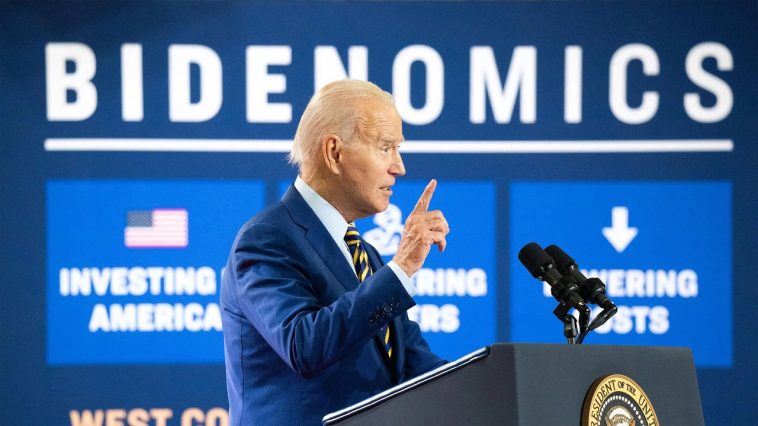LISTEN HERE:
In a new administration, it is crucial to critically evaluate the economic policies in play. As much as there is a push to herald the current economic strategies under the banner of ‘Bidenomics’ as advantageous for the average citizen, the increasing disparity between this narrative and observable reality has begun to foster skepticism among many Americans.
The media, in a bid to maintain positive coverage, often present numbers that paint the economy in an auspicious light.
However, many citizens find it increasingly difficult to reconcile the narrative with what their own experience tells them. Their bank accounts and the prices at the grocery store reflect a different story than what they’re being told to accept.
There is yet another alarming figure that affirms this disconnect. With the rise of food insecurity in America during the current administration, it’s clear that the divide is growing more palpable. Recent data showing the increase in the hunger rate underlines the broader effects of the current economic direction.
A study commissioned by the U.S. Department of Agriculture revealed that the count of Americans grappling with food insecurity rose by a staggering 10 million since the current administration took office.
The report highlighted significant swell in food insecurity and very low food security across almost every household subgroup described in the study.
The findings further elucidated that the average food-secure household was spending approximately 15% more on food than a food-insecure household with the same size and structure. Such a gap shows just how consequential the rise in food insecurity has become.
Even the U.S. Agriculture Secretary, a key member of the administration, affirmed the gravity of the situation, describing the findings from the report as alarming. In his words, ‘As the pandemic began to retreat in 2022, another public health concern – food insecurity, saw an alarming increase.’
News of the rise in food insecurity follows hot on the heels of a report from the Census Bureau indicating that poverty has escalated at the fastest pace in over half a century during the current administration. And these numbers are just the starting point of a concerning bigger picture.
Adding to the list of concerns is a reported fall in the administration’s approval ratings. The president’s own party members appear to be feeling uneasy over the administration’s position on international matters, particularly their unwavering support for Israel following an unexpected and brutal attack on the nation.
Several new surveys suggest that, despite praise from Israel and its supporters in the wake of the administration’s unequivocal stance and their call for a considerable financial support package, such actions did not translate to a net rise in domestic political endorsement.
In fact, according to one Gallup survey, the approval rating plummeted by a significant 11 points in a single month among Democrats. This record-low rating is reportedly due in part to the administration’s position on the Israeli situation.
While wide support for Israel has created a sense of unease within some American demographic groups, a new Gallup finding revealed an important shift: For the first time since the question began being asked, a majority of Democrats in February voiced more sympathy for Palestinians than Israelis.
Differences in approach towards international policy are especially conspicuous among younger demographic groups. Less than half of those surveyed in Generation Z and millennials believe that public voicing of support for Israel should be the nation’s stance, as per a recent poll conducted by NPR/PBS NewsHour/Marist.
Even within Democratic circles, there is growing skepticism over the administration’s decisions. For example, a notable Democratic state representative in Michigan voiced the alienation felt by numerous Arab American and Muslim American voters in his state, citing the necessity for rebuilding trust within his community.


